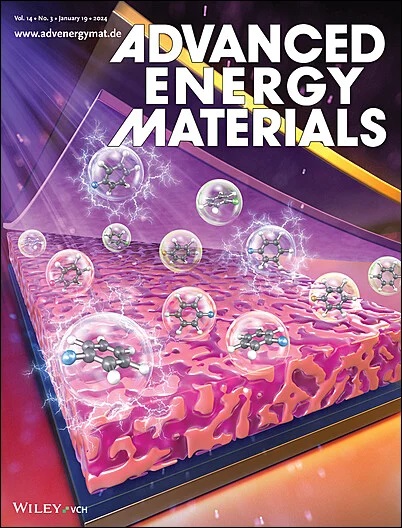Quantifying the Impact of Cathode Composite Mixing Quality on Active Mass Utilization and Reproducibility of Solid-State Battery Cells
IF 24.4
1区 材料科学
Q1 CHEMISTRY, PHYSICAL
引用次数: 0
Abstract
Research into the development and understanding of solid-state batteries often relies on pelletized press cells due to their comparative ease of use. However, these model cells are prone to comparability and reproducibility issues. This study examines the extent to which the cathode composite preparation influences the cell performance of a reference system comprising LiNi0.82Mn0.07Co0.11O2 as the cathode active material, Li6PS5Cl as the solid electrolyte, carbon nanofibers as the conductive additive, and an indium–lithium foil anode. The cathode composite is prepared either via hand mortaring or in a mini vibrating mill. The mixing process is found to be critical for the reproducibility of cell performance and accounts for many of the discrepancies observed in the capacities of different cells made with identical materials and following the same cell assembly protocol. The open-circuit relaxation method is implemented to quantify active mass utilization in the cathode in situ, which depends on the mixing process and correlates with the cell performance. This approach allows for a quantitative differentiation between static and kinetic capacity losses during the discussion of specific capacity values. The results demonstrate the significance of cathode composite mixing and the necessity of quantifying the mixing quality for reliable electrochemical data acquisition and interpretation.

量化阴极复合材料混合质量对固态电池有效质量利用率和可重复性的影响
对固态电池的发展和理解的研究往往依赖于颗粒压电池,因为它们相对容易使用。然而,这些模型细胞容易出现可比性和可重复性问题。本研究考察了以LiNi0.82Mn0.07Co0.11O2为正极活性材料、Li6PS5Cl为固体电解质、碳纳米纤维为导电添加剂、铟锂箔为阳极的基准体系中,阴极复合材料制备对电池性能的影响程度。阴极复合材料可以通过手工砂浆或在小型振动磨中制备。研究发现,混合过程对细胞性能的再现性至关重要,并解释了使用相同材料并遵循相同细胞组装方案制成的不同细胞在容量方面所观察到的许多差异。采用开路弛豫法对原位阴极的有效质量利用率进行量化,这取决于混合过程并与电池性能相关。这种方法允许在讨论比容值时定量区分静态和动态容量损失。结果表明了阴极复合材料混合的重要性和定量混合质量对可靠的电化学数据采集和解释的必要性。
本文章由计算机程序翻译,如有差异,请以英文原文为准。
求助全文
约1分钟内获得全文
求助全文
来源期刊

Advanced Energy Materials
CHEMISTRY, PHYSICAL-ENERGY & FUELS
CiteScore
41.90
自引率
4.00%
发文量
889
审稿时长
1.4 months
期刊介绍:
Established in 2011, Advanced Energy Materials is an international, interdisciplinary, English-language journal that focuses on materials used in energy harvesting, conversion, and storage. It is regarded as a top-quality journal alongside Advanced Materials, Advanced Functional Materials, and Small.
With a 2022 Impact Factor of 27.8, Advanced Energy Materials is considered a prime source for the best energy-related research. The journal covers a wide range of topics in energy-related research, including organic and inorganic photovoltaics, batteries and supercapacitors, fuel cells, hydrogen generation and storage, thermoelectrics, water splitting and photocatalysis, solar fuels and thermosolar power, magnetocalorics, and piezoelectronics.
The readership of Advanced Energy Materials includes materials scientists, chemists, physicists, and engineers in both academia and industry. The journal is indexed in various databases and collections, such as Advanced Technologies & Aerospace Database, FIZ Karlsruhe, INSPEC (IET), Science Citation Index Expanded, Technology Collection, and Web of Science, among others.
 求助内容:
求助内容: 应助结果提醒方式:
应助结果提醒方式:


